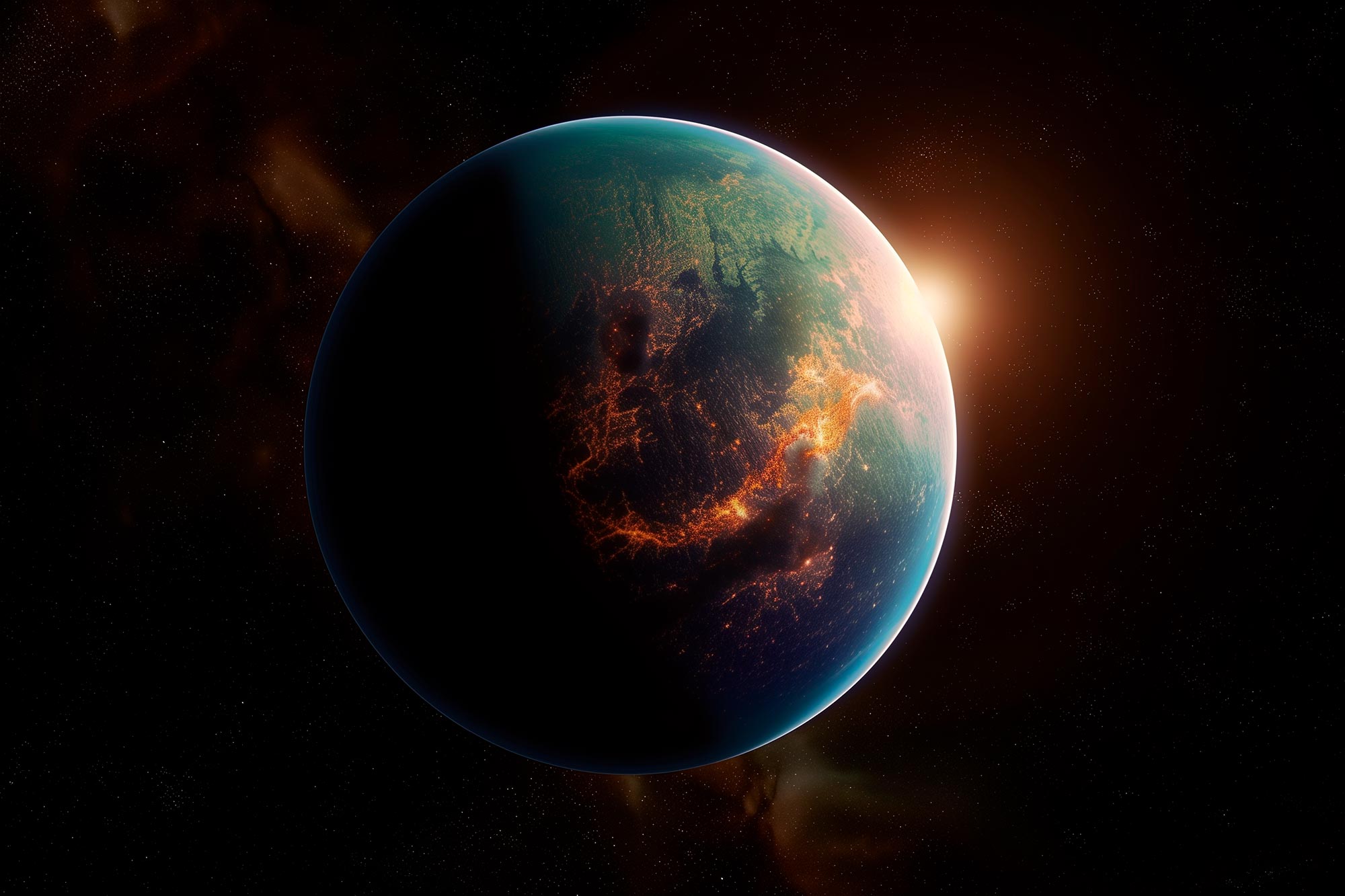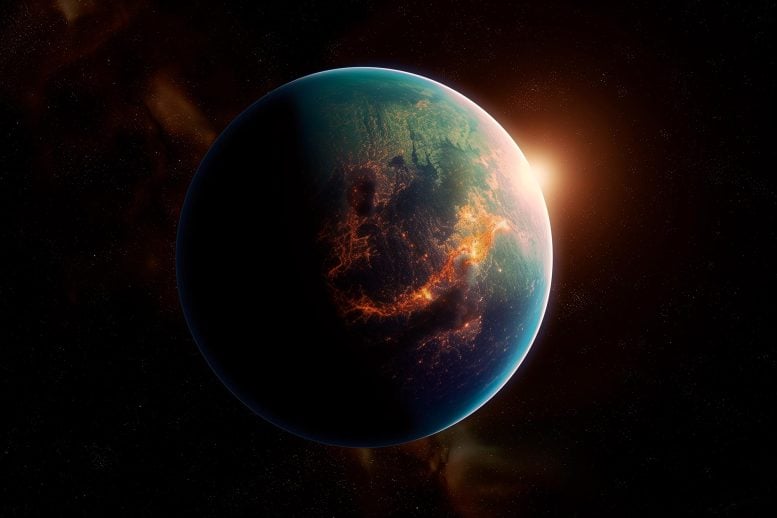

Doctoral student leads research on planets that pass through the habitable zone during part of their orbits.
Are there planets beyond Earth where humans could live? The answer is possibly, according to a new study by physicists at the University of Texas at Arlington, who explored F-type star systems.
Stars fall into seven lettered categories according to their surface temperature. They also differ in other factors including mass, luminosity, and radius. F-types are in the middle of the scale, hotter and more massive than our sun. F-type stars are yellowish white in color and have surface temperatures of more than 10,000 degrees.
A habitable zone (HZ) is the distance from a star at which water could exist on orbiting planets’ surfaces. In the research led by doctoral student Shaan Patel and co-authored by professors Manfred Cuntz and Nevin Weinberg, the physicists presented a detailed statistical analysis of the currently known planet-hosting F-type stars using the NASA Exoplanet Archive. The archive is an online exoplanet and star data service that collects data for research.
“F-type stars are usually considered the high-luminosity end of stars with a serious prospect for allowing an environment for planets favorable for life,” Dr. Cuntz said. “However, those stars are often ignored by the scientific community. Although F-type stars have a shorter lifetime than our sun, they have a wider HZ. In short, F-type stars are not hopeless in the context of astrobiology.”
Analyzing F-Type Star Systems for Habitability
“F-type star systems are important and intriguing cases when dealing with habitability due to the larger HZs,” Patel said. “HZs are defined as areas in which conditions are right for Earth-type bodies to potentially host exolife.” Exolife is the possibility that life may exist outside our solar system.

After excluding systems with little information about planets, the team identified 206 systems of interest. “We further broke down those 18 systems into four sub-categories depending on how much time they would spend in the HZ,” said Patel.
Highlighted Example: HD 111998
In one case, the planet HD 111998, also known as 38 Virginis, is always situated in the HZ. It is located 108 light-years from Earth and is thus considered to be part of the extended Solar System neighborhood. It’s also 18% more massive and has a radius 45% greater than the sun, Cuntz said.
“The planet in question was discovered in 2016 at La Silla, Chile,” Cuntz said. “It is a Jupiter-type planet which is unlikely to permit life itself, but it offers the general prospect of habitable exomoons, an active field of worldwide research also pursued here at UTA.”
“In future studies, our work may serve to investigate the existence of Earth-mass planets and also habitable exomoons hosted by exo-Jupiters in F-type systems,” Patel said.
Among possible future projects, the team noted, are studies of planetary orbits, including cases of part-time HZ planets; explorations of the relationships between planetary habitability and stellar evolution, including astrobiological aspects; and assessments of exomoons for distinct systems.
“What makes a study like this possible is the hard work and dedication of the worldwide community of astronomers who have discovered more than 5,000 planets over the last 30 years,” Dr. Weinberg said. “With so many known planets, we can now carry out statistical analyses of even relatively rare systems, such as planets orbiting F-type stars, and identify those that might reside in the habitable zone.”
Reference: “Statistics and Habitability of F-type Star–Planet Systems” by Shaan D. Patel, Manfred Cuntz and Nevin N. Weinberg, 12 September 2024, The Astrophysical Journal Supplement Series.
DOI: 10.3847/1538-4365/ad65eb
The study was funded by the U.S. National Science Foundation.